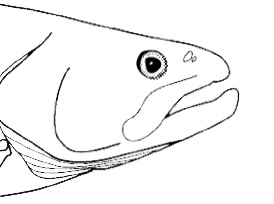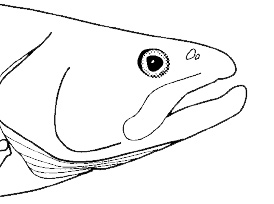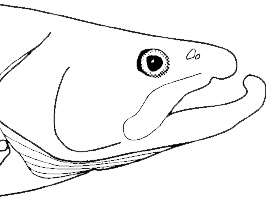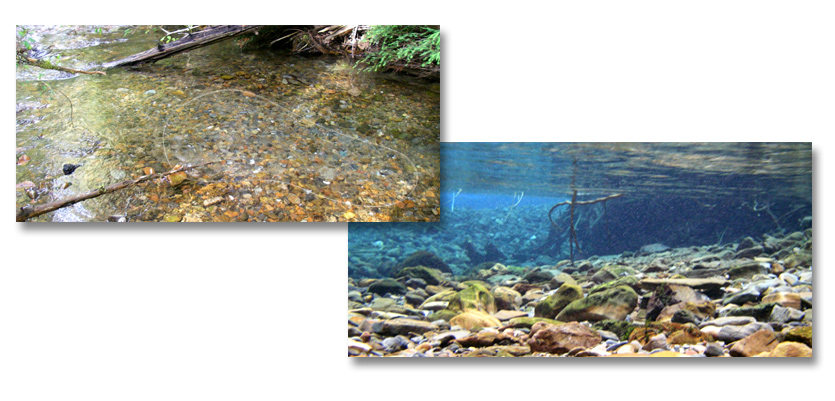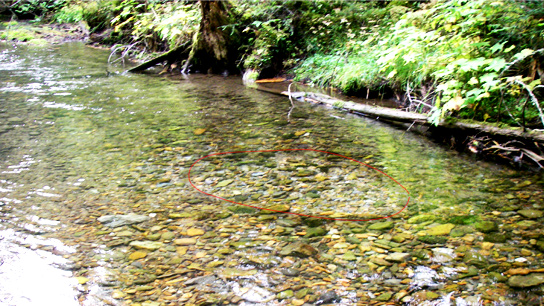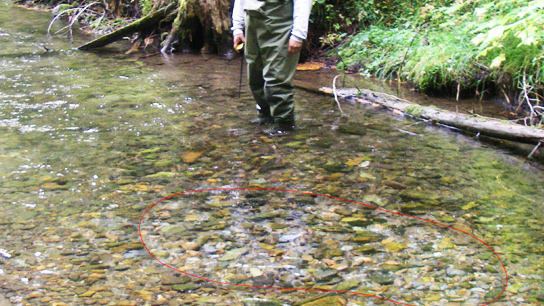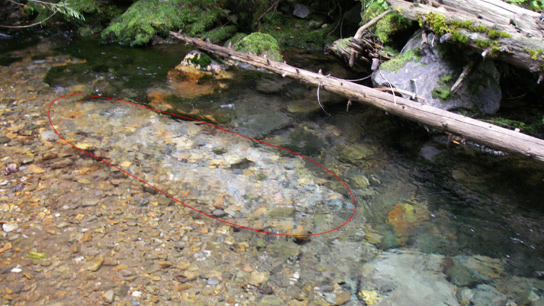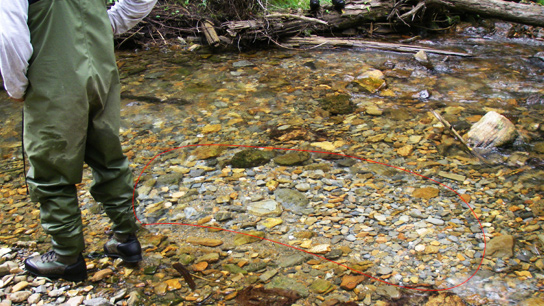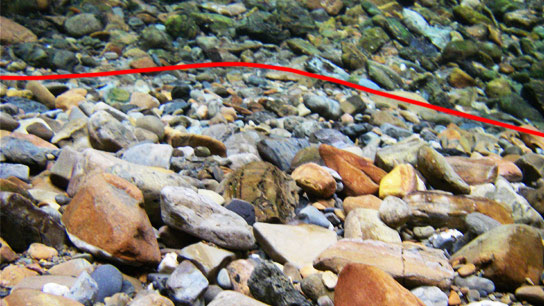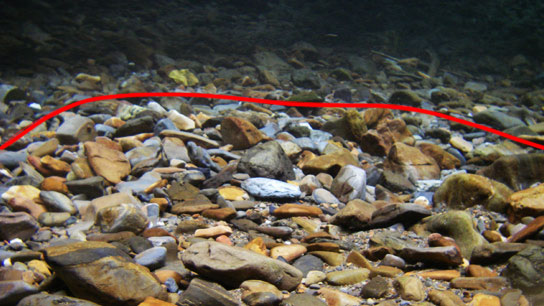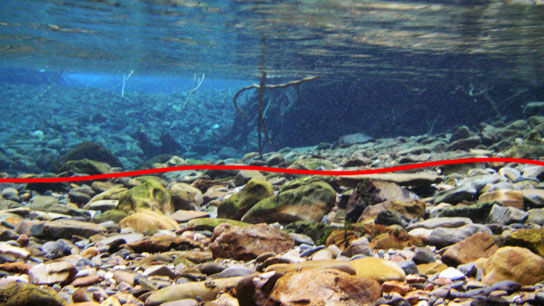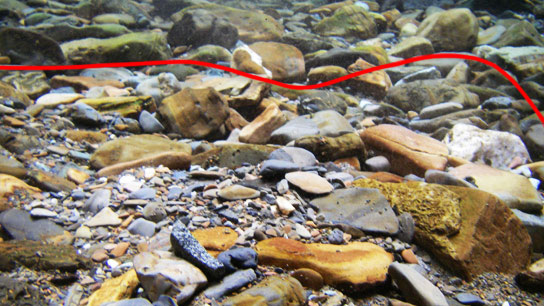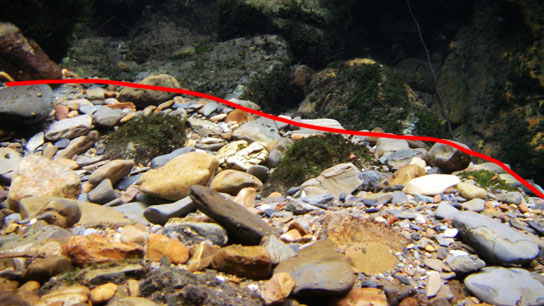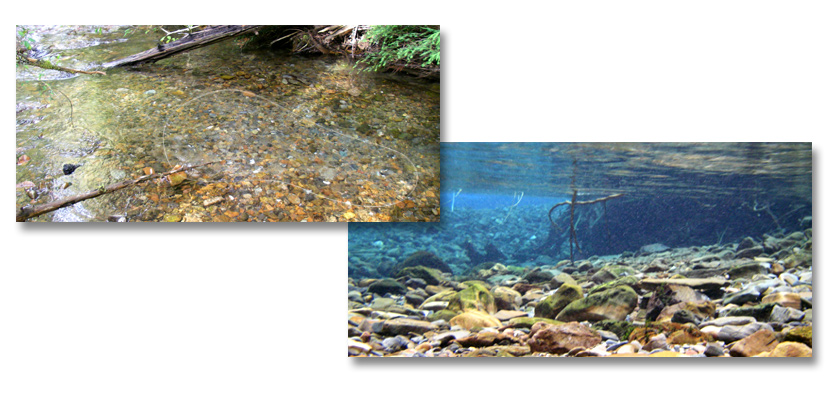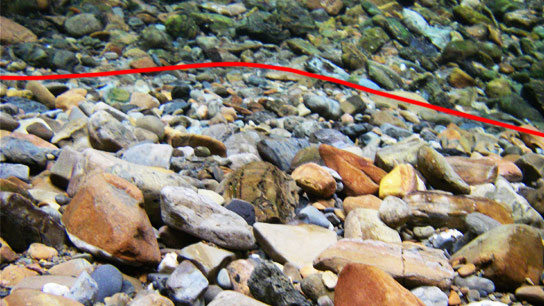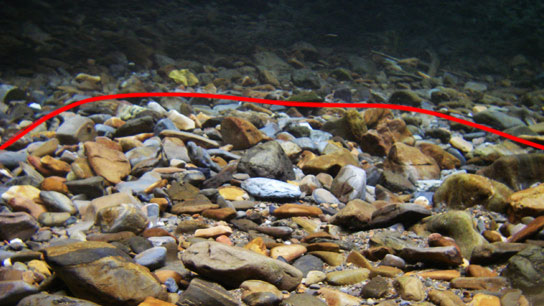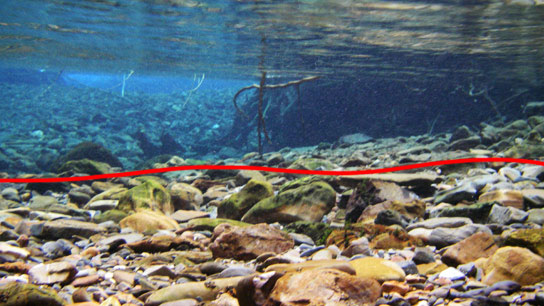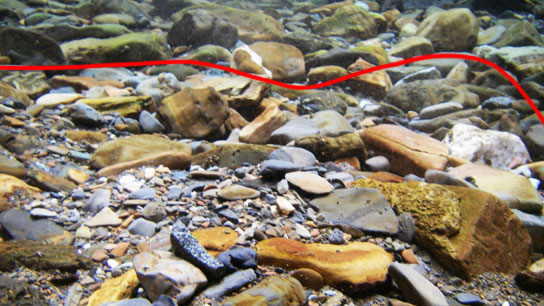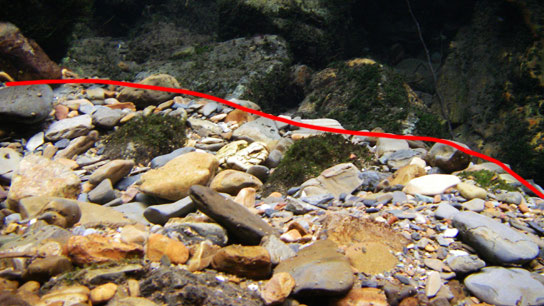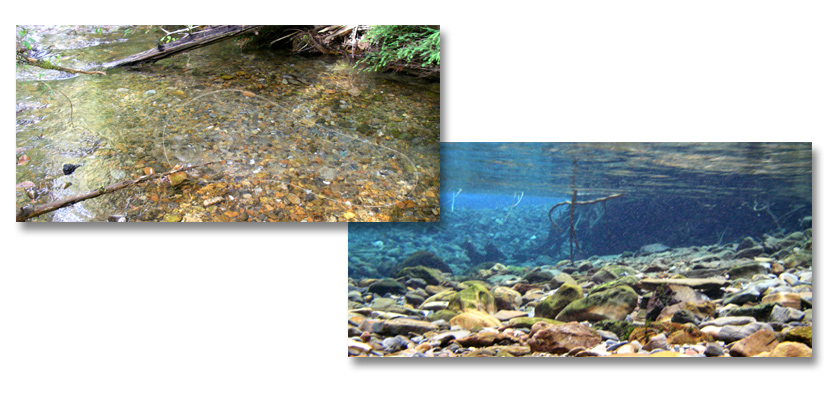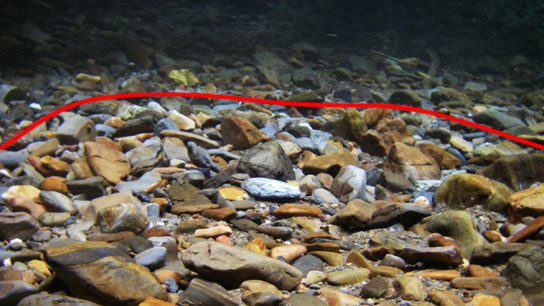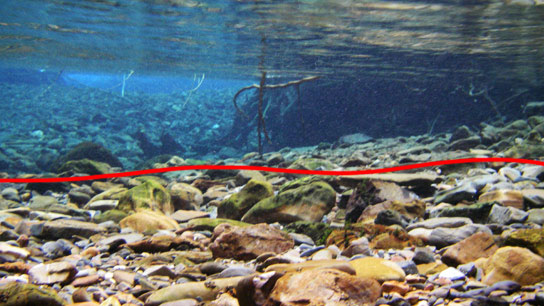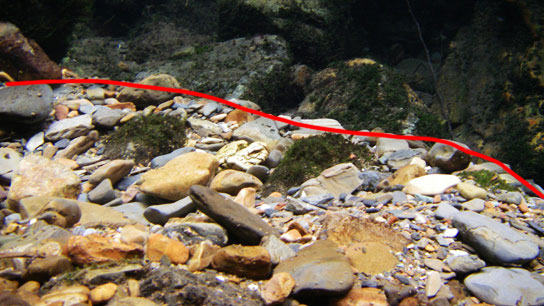Digging a Redd
The Parts of a Redd
The redd is formed by the female bull trout turning on her side and fanning the gravel and sand downstream with powerful thrusts of her tail. When the redd is completed, there is a depression called the pit at the upstream end, and a mound called the tail or the tailspill at the downstream end; egg pockets are normally under the upstream portion of the mound. The cover of gravel between the egg pocket and the surface of the redd is called the bridge.

How Does a Bull Trout Dig?
Redd construction is done by the female. At fairly regular intervals, she turns on her side and digs vigorously by placing her tail flat against the stream bottom and suddenly lifting it upward with a powerful muscular contraction. This creates a hydraulic suction that is generally strong enough to loosen stones and finer materials and to move them several inches upward. Once she detaches this gravel, cobble, and sand from the surface, the current carries it for a short distance and then it settles. These tail movements are rapidly repeated several times, then she rests.



